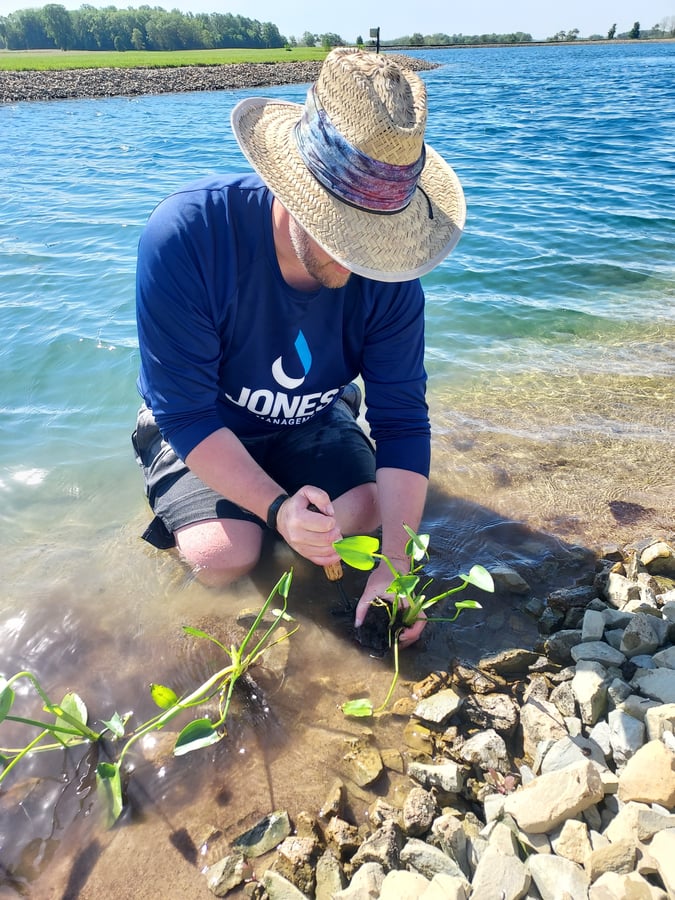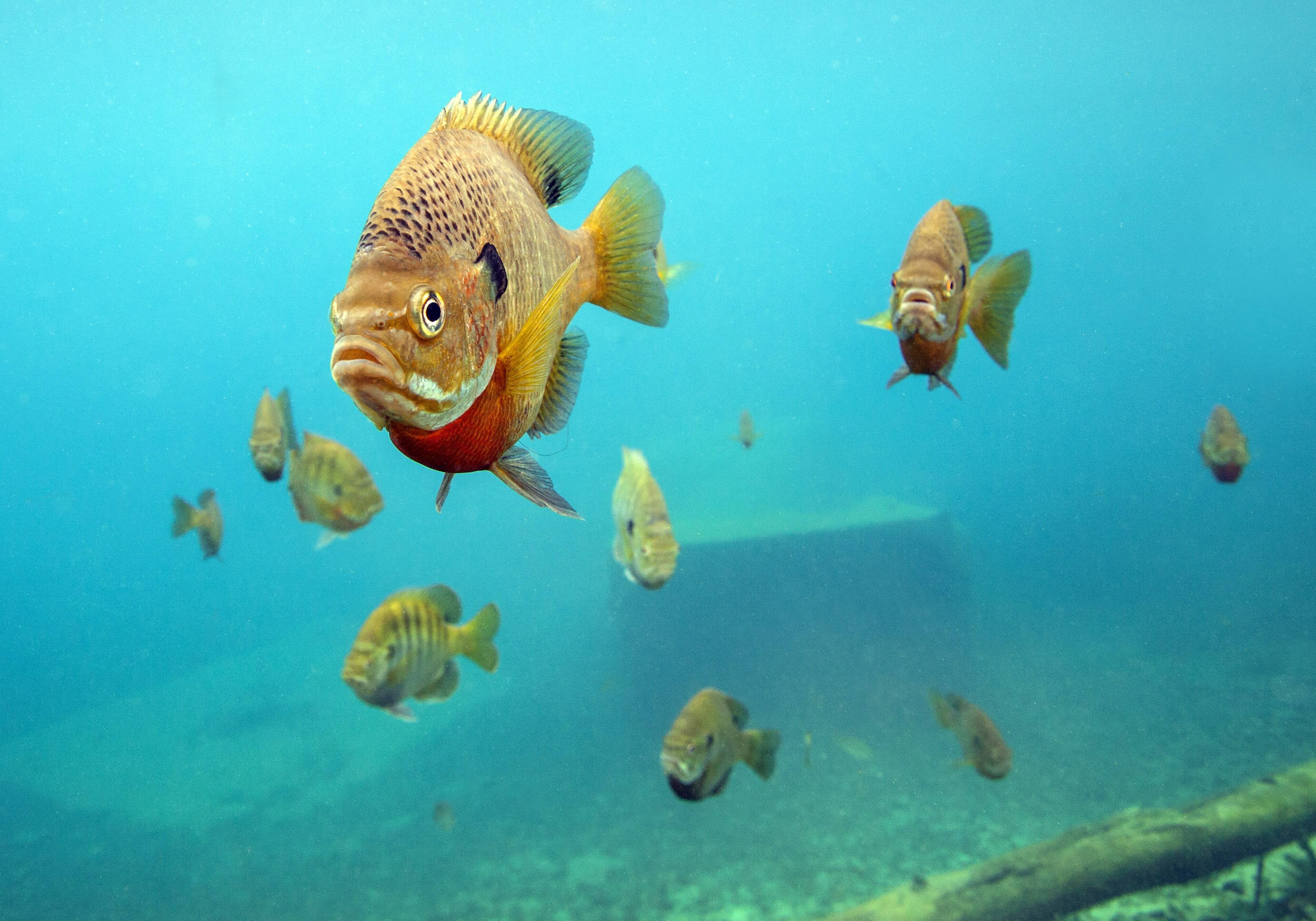Restoring Pond Edges with Native Wetland Plants in Wisconsin

Stop Shoreline Erosion with Native Plants
Pond erosion can quickly turn a beautiful, functional waterbody into a maintenance headache. Shorelines recede, sediment clouds the water, and nutrient loading triggers unwanted weed and algae growth. Fortunately, native wetland plants offer a natural, long-term solution—right here in Wisconsin.
At Wisconsin Lake & Pond Resource, we help pond owners protect their waterbodies by planting native vegetation that stabilizes soil, improves water quality, and supports native wildlife.
How Native Wetland Plants Protect Shorelines
Many property owners try to solve shoreline erosion with riprap, mulch, or turfgrass—but these options either require heavy maintenance or fail in the face of wind and wave energy.
Native wetland plants like Pickerel Rush, Sweet Flag, Soft Rush, Arrowhead, Swamp Iris, and Lizard’s Tail thrive in saturated soils and dynamic water levels. Their dense root systems grip the soil beneath the surface and slow down wave energy, acting as a natural buffer that protects your shoreline from being stripped away.
Local Plants, Lasting Results
Because these species are native to Wisconsin, they’re already adapted to freeze-thaw cycles, flooding, and nutrient-rich runoff. This means they:
- Establish faster
- Require less maintenance
- Outcompete invasive plants
- Withstand harsh winter conditions
Their thick growth also improves habitat quality for songbirds, amphibians, dragonflies, turtles, and beneficial insects.
Smarter Planting: Where and How
Strategic placement is the key to success. You don’t need to replant every foot of shoreline. Instead, we recommend planting:
- Stormwater inflows to filter sediment and nutrients
- Bare or eroding slopes with visible soil loss
- Natural low points that flood during rain events
- Sunny, gently sloped areas for optimal growth
These zones become self-sustaining buffers that also reduce mowing zones and discourage goose traffic.




Best Time to Plant in Wisconsin
Spring (April–early June) is the best time to install wetland plants in Wisconsin. Cooler temperatures and moist soils promote strong root development before summer. Early planting also ensures the vegetation is fully established before fall and winter dormancy.
Wetland Plantings = A Healthier Pond
These native plants do more than fight erosion. They contribute to the overall health of your pond by:
- Filtering out sediment and nutrients
- Improving water clarity
- Preventing shoreline undercutting
- Supporting fish, birds, and amphibians
- Adding natural beauty and seasonal color
Over time, they reduce the need for chemical treatments and increase the pond’s biological balance.
Wisconsin-Native Plant Kits + Installation
Whether you're looking for a DIY native plant package or want our full-service shoreline restoration, we tailor each solution to the unique conditions of your pond. Every package includes a curated mix of species that thrive in Wisconsin’s climate and soils.
Reach out today to discuss restoring your shoreline with native plants.
About Wisconsin Lake & Pond Resource, A Jones Lake Management Partner
Wisconsin Lake & Pond Resource specializes in comprehensive lake and pond management solutions, including algae and aquatic weed control, aeration, hydraulic dredging, erosion control, and fisheries management. As a Jones Lake Management Partner, we serve a diverse range of clients, including HOAs, golf courses, municipalities, and private lake owners. With a commitment to science-driven strategies and environmental sustainability, Wisconsin Lake & Pond Resource helps maintain and restore aquatic ecosystems for long-term health and enjoyment.
Topics
- Aeration (3)
- Algae (2)
- Aquatic Weeds & Algae Control (13)
- Bathymetry Mapping (2)
- Company News & Updates (33)
- Erosion Control & Sediment Reduction (4)
- Fish Management (1)
- fish stocking (6)
- Fisheries Management (21)
- Fishery (2)
- Fountains & Aeration (16)
- Hydraulic Dredging (6)
- Invasive Species Management (7)
- Lake & Pond Management (47)
- Lake Management (1)
- Native Wetland Plantings (1)
- Nutrient Management (9)
- Pond Management (1)
- Seasonal Pond Management (15)
- Sediment Sampling (1)
- Stormwater & Runoff Management (5)
- Sustainability & Eco-Friendly Solutions (4)
- Water Quality (3)
- Water Quality Monitoring (2)
- Winter Care (1)
- Winter Pond care (1)
